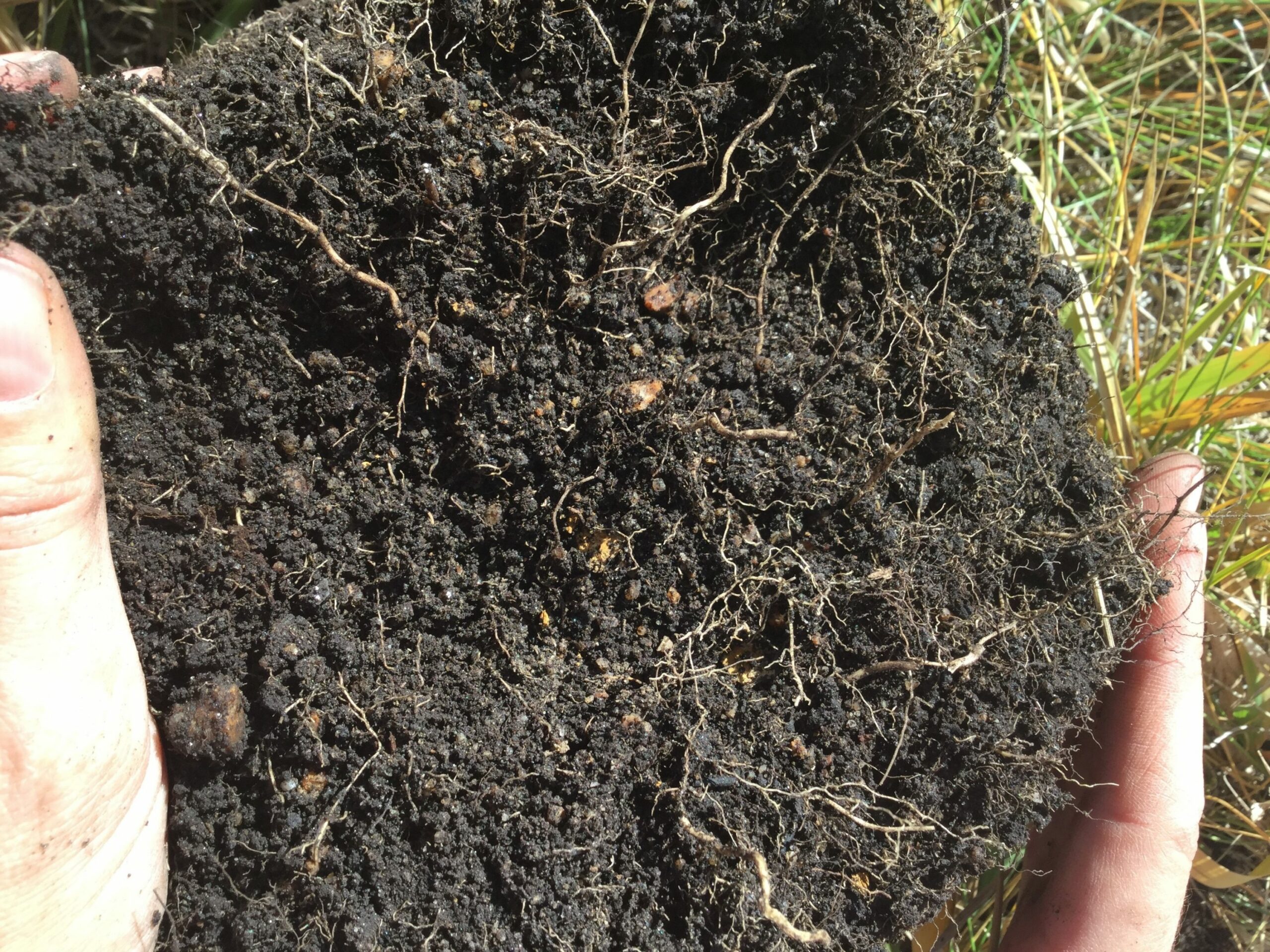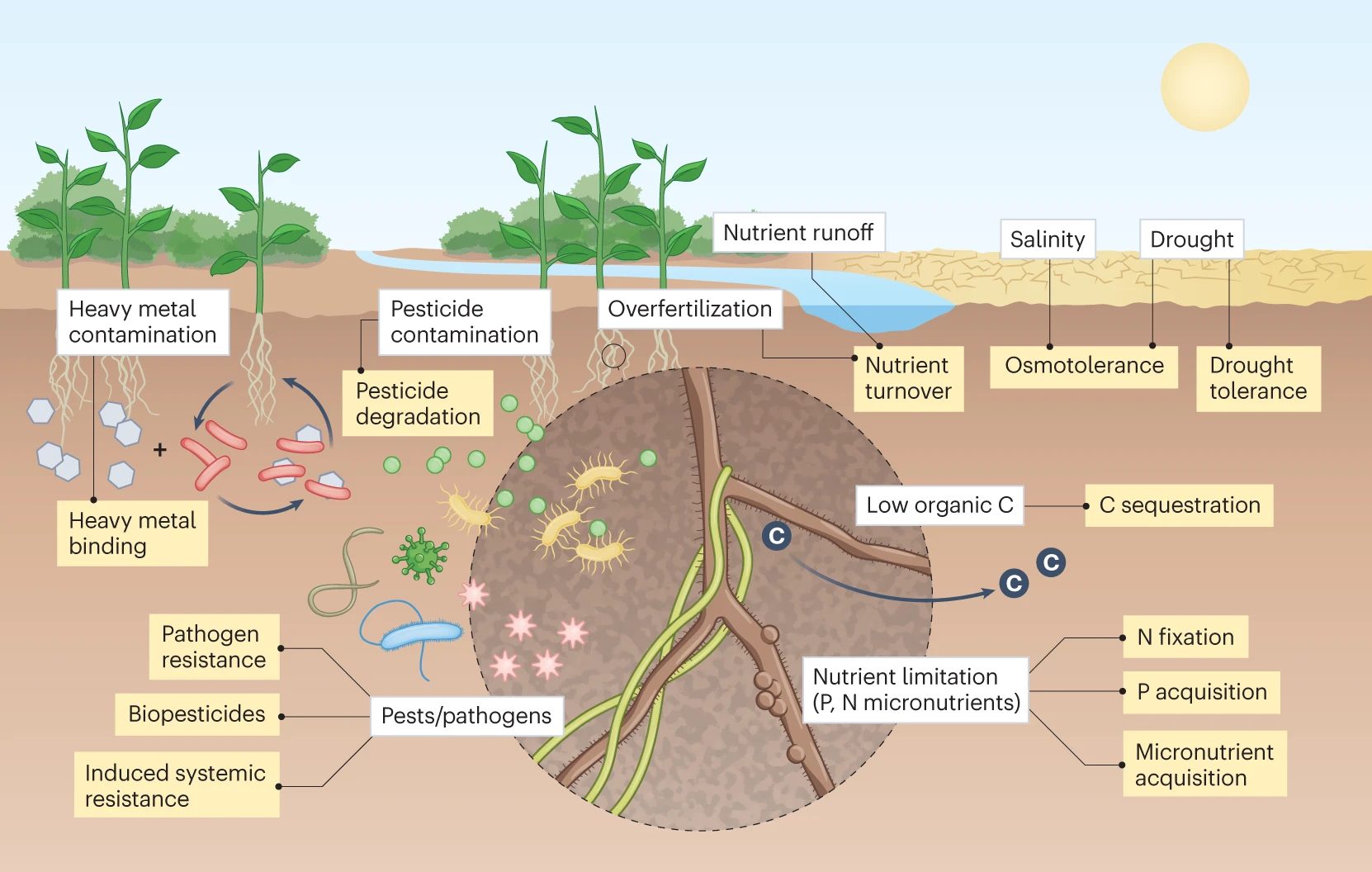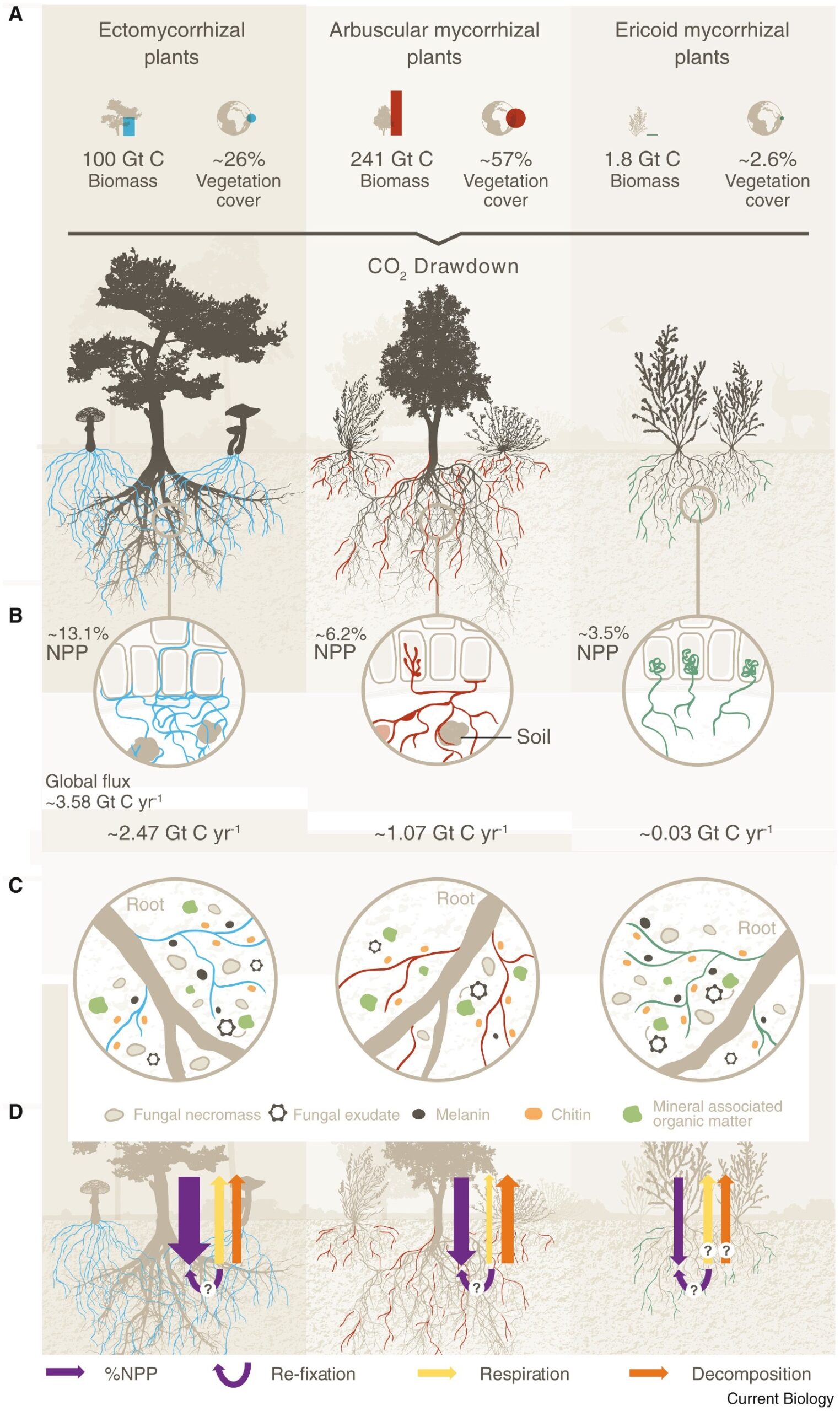Energy Innovation partners with the independent nonprofit Aspen Global Change Institute (AGCI) to provide climate and energy research updates. The research synopsis below comes from AGCI’s Asa DeHaan, Research Technician at Aspen Global Change Institute and Elise Osenga, Community Science Manager at Aspen Global Change Institute. A full list of AGCI’s updates is available online.

The Unseen World
Beneath the ground, a diverse ecosystem teems with microscopic life. The soil microbiome is a complex life system dominated by bacteria, fungi, viruses, and numerous other microorganisms. This cast of players performs many functions from nitrogen fixation (converting nitrogen from the atmosphere to a form that plants can more readily use for growth) to decomposition to carbon storage. Compared to the volume of science conducted above ground, relatively little is known about this hidden world, but recent research is opening new windows into how microbiomes may shape and be shaped by a changing climate.
The Plant-Microbe Relationship
The relationship between microbes and plants is particularly complex (Fig. 1) and has direct consequences for agricultural productivity. However, climate change may alter the function and composition of soil microbial communities. Drought is already having widespread impacts on plants and microbiomes, with consequences for agriculture and rangeland productivity around the world. The latest Intergovernmental Panel on Climate Change report found that as the climate changes, many regions experience more frequent and more intense droughts. For many areas, rising temperatures translate into increased water loss from soils and water bodies, changes to patterns and duration of snow cover, and shifts in the timing and intensity of precipitation events (IPCC AR6, Chpt 11). Still in question is how ecosystems, and the microbiomes they are grounded in, will adapt.

Amidst these environmental shifts, researchers are considering the capabilities of plant-microbe interactions to offer a pathway to resilience. In a review of the literature on microbial potential to support successful sustainable agriculture published in the journal Microbes, Antoszewski and colleagues found that microbes can improve plant resilience to environmental stressors. Plants attract “stress microbiomes” through a chemical signal, which allows the plants to adapt to environmental conditions, such as drought, by improving water use efficiency, plant water content, CO2 assimilation rates, chlorophyll content, and plant productivity. Drought affects not only plant growth and yield but also the composition and functionality of the soil microbiome. The presence of drought-resistant bacteria increases under drought conditions. Deeper understanding of the symbiosis between plants and stress microbiomes in the soil could illuminate potential strategies for enhancing plant survival in drought-prone areas amid climate change.
However, a new greenhouse experiment by University of Illinois researchers Ricks and Yannarell indicates that some soil microbial communities may adapt to drought independent of plant signals. The researchers observed plant health under contrasting conditions of water availability. Using a soil mix that included field samples from a local restored tallgrass prairie, they created pots that were either planted with mustard plants (Abidopsis thaliana or Brassica rapa) or left as bare soil. Over the course of three plant generations, different groups of pots received different watering regimes, with some pots experiencing simulated drought. For a fourth and final generation of plants, the researchers compared how well plants performed based on their watering history vs. the watering history of the soils in which they were planted. They found that soil microbes appeared to adapt to their environments (either wet or dry) regardless of whether or not their associated host plants were present at the time of simulated drought. Further, plants introduced into formerly unplanted, drought-exposed soils performed better under future water-limited conditions than plants grown in soils whose microbes had not previously undergone simulated drought. While Ricks and Yannarell acknowledge that their experiment focuses on only a small subset of microbe-host plant interactions, the study opens new questions about the potential for plant-independent microbial adaptation to drought and outcomes for plant survival in regions facing a drier future.
Recent research from J.M. Lavallee and colleagues published in Nature Communications found that land management practices may also play a role in determining how drought influences soil microbial communities. The study was carried out across a series of mesotrophic grasslands (meadows used for haymaking and pasture) in the United Kingdom and found that intensive grassland management, characterized by regular application of fertilizer and lime, favors drought-resistant soil microbial bacteria. By contrast, the same intensive management practices had the opposite effect on fungal taxa, leading drought-sensitive fungi to comprise a larger portion of the overall fungi community in the soil. This differential response between bacteria and fungi under varying management intensities suggests that intensive management may favor bacterial dominance over fungi following drought. Because bacteria and fungi perform different (although sometimes overlapping) functions in the soil, shifts in the dominant composition of the community could have implications for plant species composition, ecosystem drought resilience, and even carbon storage.
Players In The Carbon Cycle
Simultaneous research on the carbon cycle suggests that microbial communities may be more important than previously understood when it comes to estimating alterations to the climate. One such study by Heidi-Jayne Hawkins and colleagues looked at mycorrhizal fungi, commonly found across many landscapes. Through a symbiotic relationship, the soil fungi help certain plants absorb water and nutrients from the soil, receiving carbohydrates in return. During this process, the fungi transport carbon to deep soil layers, contributing to long-term carbon storage (Fig. 2).
When mycelium, the fungal threads, die, they become “necromass,” an organic material that helps to form and stabilize soil aggregates, which protect soils from erosion and decomposition and stabilize soil organic carbon. Looking at 194 datasets to estimate the total carbon storage pool associated with mycorrhizae, Hawkins and colleagues estimated that plant hosts allocate (at least temporarily) around 13.12 metric gigatons of carbon dioxide a year to soil fungi around the globe. This volume, equal to roughly a third of from fossil fuels, suggests that mycorrhizal fungi contribute more to the building of soil organic carbon pools than either living fungal biomass or plant litter. The researchers assert that a quantitative assessment of carbon storage resulting from mycorrhizal-plant interactions is critical to more fully understanding carbon fluxes and better modeling future rates of climate change.

A current research review by Mason et al. similarly calls for more attention to the role of microbiomes by looking at how soil amendments and inoculations impact microbiomes and carbon storage. The review discusses both fungi and bacteria, noting how different microbes are intertwined with carbon cycle processes. While the relationship of soil fungi in carbon storage has been studied, the role of soil-bound bacteria has not been examined as closely, even though some bacteria appear to play a similar role as fungi in carbon storage. For example, one group of bacteria, Actinomycetes, can produce a filamentous structure that can store carbon underground. These bacteria can contribute to soil biomass and necromass and are capable of surviving extreme conditions. However, much remains unknown about soil bacterial capacities in building carbon sequestration.
Climate Resilience And The Future
These recent explorations into the soil microbiome uncover a vast, intricate world beneath our feet, where microorganisms play vital and rapidly changing roles in agriculture, climate resilience, and carbon sequestration. As climate change alters our landscapes, studies such as those by Antoszewski et al., Ricks and Yannarell, Hawkins et al., and Lavallee et al. shed light on the adaptability of microbial communities and their potential to mitigate the impacts of climate change or even climate change itself. But even as this current boom in research uncovers the complex network of interdependence humans rely on from the ground up, it also reveals many areas still ripe for further investigation.
Featured Research
Lavallee, J.M., Chomel, M., Alvarez Segura, N. et al. Land management shapes drought responses of dominant soil microbial taxa across grasslands. Nat Commun 15, 29 (2024). https://doi.org/10.1038/s41467-023-43864-1
Mason, A. R. G., Salomon, M. J., Lowe, A. J., & Cavagnaro, T. R. (2023). Microbial solutions to soil carbon sequestration. Journal of Cleaner Production, 417, 137993. https://doi.org/10.1016/j.jclepro.2023.137993
Hawkins, H.-J., Cargill, R. I. M., Van Nuland, M. E., Hagen, S. C., Field, K. J., Sheldrake, M., Soudzilovskaia, N. A., & Kiers, E. T. (2023). Mycorrhizal mycelium as a global carbon pool. Current Biology, 33(11), R560-R573. https://doi.org/10.1016/j.cub.2023.02.027
Ricks, K.D., & Yannarell, A.C. (2023). Soil moisture incidentally selects for microbes that facilitate locally adaptive plant response. Proceedings of the Royal Society B 290 29020230469. https://doi.org/10.1098/rspb.2023.0469